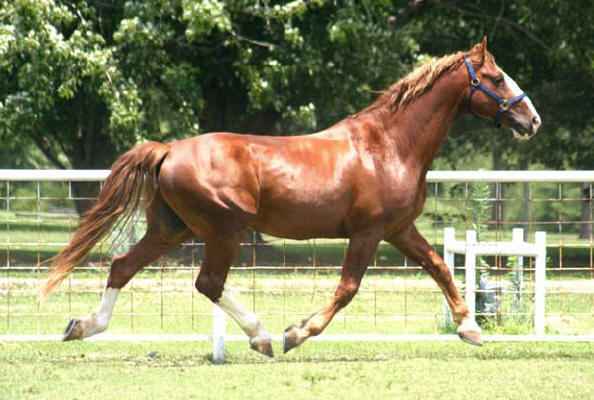
In the world of equestrian enthusiasts and horse aficionados, the Fredericksburg horse breed stands as a testament to the beauty, resilience, and adaptability of equine companions. With its rich history, distinct characteristics, and undeniable suitability for riders of various skill levels, the Fredericksburg horse breed has carved its place in the hearts of horse lovers around the globe.
Origins and Historical Significance
The origins of the Fredericksburg horse breed can be traced back to the early 18th century in Fredericksburg, a picturesque town nestled along the Rappahannock River in Virginia, USA. During this time, the region was flourishing with agriculture and trade, and horses were indispensable for transportation, farming, and leisure activities. Local breeders, seeking a versatile and robust equine companion, embarked on a journey to create a horse breed that could excel in various roles.
Breed Characteristics
The Fredericksburg horse breed is characterized by its medium build, well-proportioned physique, and an impressive height range of 14.2 to 16.2 hands. This size places it in the versatile category between light and heavy horse breeds, enabling it to perform a myriad of tasks effectively. Their well-muscled bodies, strong legs, and sturdy hooves contribute to their durability and resilience, traits that were essential for their historical roles in farming, transportation, and even military activities.
Temperament and Trainability
One of the most cherished traits of the Fredericksburg horse breed is its amiable temperament. Known for their intelligence, willingness to cooperate, and gentle disposition, these horses are a delight to work with. Their natural inclination to bond with their riders makes them suitable companions for equestrians of all skill levels, from novice riders to experienced horsemen. This temperament, combined with their adaptability, has made them a popular choice for various equestrian disciplines, including dressage, show jumping, and pleasure riding.
Suitability for Riders
The Fredericksburg horse breed’s suitability for riders stems from its versatile nature. Novice riders find comfort in their calm and patient demeanor, allowing them to learn and build confidence in the saddle. At the same time, experienced riders appreciate their athleticism and willingness to tackle advanced maneuvers. Their medium build and balanced conformation make them well-suited for activities that demand agility, such as show jumping and cross-country riding. Additionally, their smooth gaits provide a comfortable ride, making them equally appealing for pleasure riding and long journeys.
Preserving the Breed
As time progressed, the role of horses in society shifted due to advancements in technology and transportation. Despite these changes, dedicated breed enthusiasts and preservationists recognized the historical and cultural significance of the Fredericksburg horse breed. Efforts to maintain the breed’s purity, genetic diversity, and unique characteristics led to the establishment of breed registries and conservation programs.
Conclusion
The Fredericksburg horse breed stands as a symbol of history, versatility, and companionship. Its journey from the bustling fields of Fredericksburg to the modern equestrian world showcases the enduring bond between humans and horses. With its ideal size, gentle temperament, and adaptability, the Fredericksburg horse continues to capture the hearts of riders, embodying the spirit of a true equestrian partner.
9 Fun Facts About the Fredericksburg Horse
Named After Their Birthplace: The Fredericksburg horse breed is named after the town of Fredericksburg in Virginia, USA, where they were first developed in the 18th century. The town’s historical significance adds to the charm of this breed.
Versatile Athletes: Fredericksburg horses are known for their versatility. They can excel in a variety of equestrian disciplines, including dressage, show jumping, eventing, trail riding, and even Western riding. This adaptability is a testament to their well-rounded nature.
Historical Heroes: During the American Civil War, Fredericksburg horses were used as cavalry mounts by both the Union and Confederate armies. Their endurance and ability to navigate varied terrain made them valuable assets on the battlefield.
Gentle Giants: Despite their historical roles in military and agricultural activities, Fredericksburg horses are known for their gentle and docile temperament. This disposition makes them excellent companions for riders of all ages and skill levels.
Size Variety: The Fredericksburg breed comes in a wide range of sizes, with individuals standing between 14.2 and 16.2 hands high. This variety allows riders to find a horse that suits their needs, whether it’s a smaller mount for children or a larger one for adults.
Smooth Gaits: The breed’s natural gaits are often smooth and comfortable, making them an enjoyable ride for long distances. Their steady trot and ambling gaits contribute to their reputation as excellent pleasure horses.
Conservation Efforts: Like many traditional horse breeds, the Fredericksburg horse breed faced challenges as modernization took over. However, passionate breed enthusiasts and preservationists have worked diligently to maintain and revive the breed, ensuring that its unique characteristics and historical importance are not lost.
Regional Heritage: The Fredericksburg horse breed is not only a part of American equestrian history but also a testament to the local heritage of the Fredericksburg region in Virginia. Its existence serves as a reminder of the deep connection between the land and its people.
Bond with Humans: Fredericksburg horses are known for forming strong bonds with their human partners. Their loyalty and willingness to cooperate make them more than just working animals; they become cherished companions and friends.
Related Articles & Free Email Newsletter Sign Up
The Galineers Cob Horse is a Versatile Equine Companion
The History of the Mustang Horse Breed: From Wild to Iconic
The Knabstrupper Horse is a Striking Blend of History and Elegance


Comment here